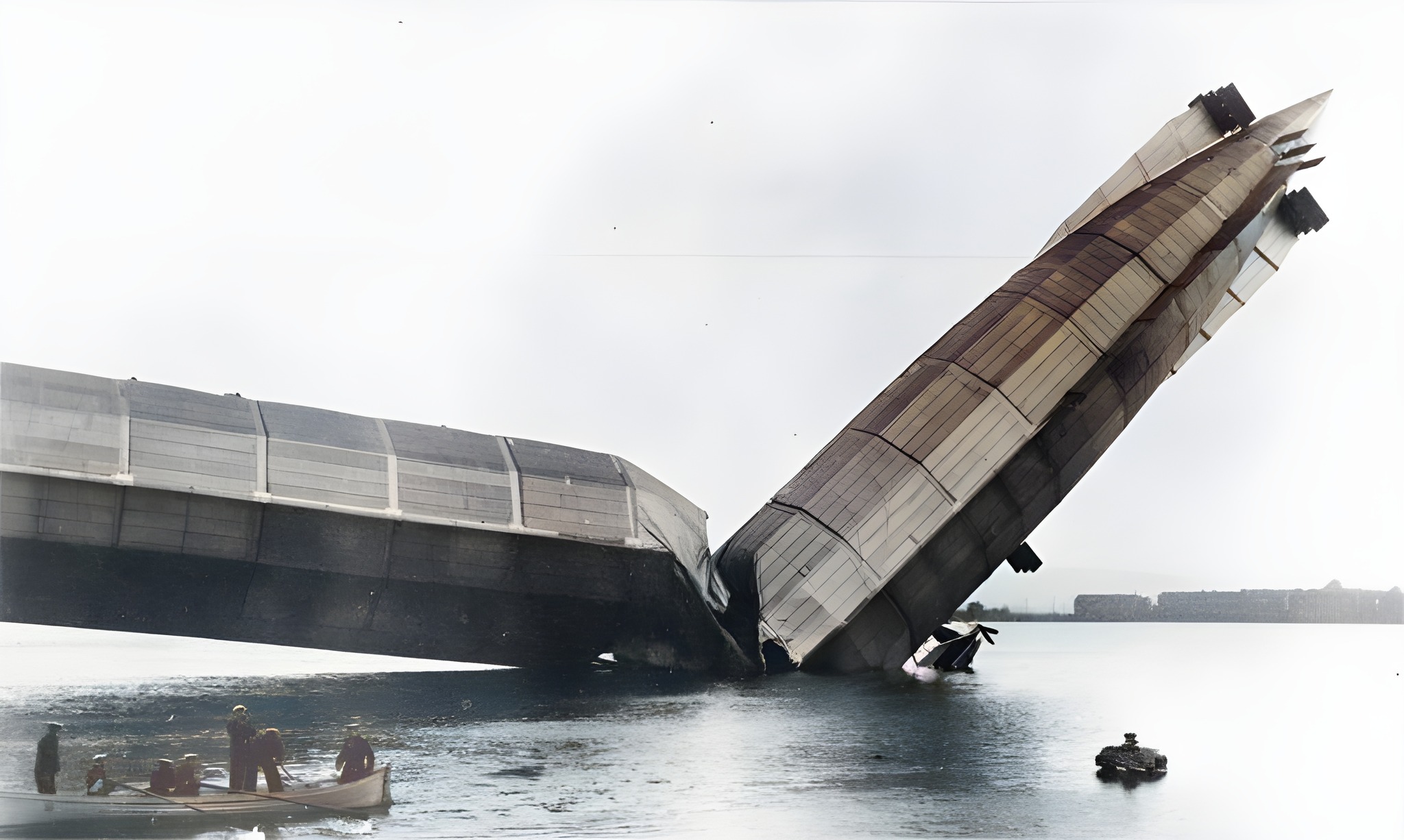 >
>
Mayfly's Mishap: A Grounded Dream in Cavendish Dock The crisp autumn air crackled with anticipation. A crowd gathered at Cavendish Dock in Barrow-in-Furness, their breath misting in the cool air, eyes fixed on the gleaming silver behemoth that strained at its moorings. This was no ordinary vessel; this was the Mayfly, Britain's first rigid airship, a symbol of national pride and a bold challenge to the dominance of the German Zeppelins. #BritishAirship #History #CavendishDock Officially designated HMA No. 1 and recorded as "HMA Hermione" in public records, the airship earned its affectionate nickname, "Mayfly," from the lower-deck crew quartered on the nearby naval vessel HMS Hermione. Born from a rivalry with the German Zeppelin programme, the Mayfly was a colossal creation, dwarfing even the mighty LZ6. At 512 feet long and 46 feet in diameter, it boasted a 50% greater volume and a correspondingly greater lift. This aerial leviathan, designed and built by Vickers, Sons and Maxim, was destined to revolutionise naval scouting. Imagine the scene: the pungent scent of coal smoke from nearby factories mingling with the salty tang of the sea, the crispness of the autumn air against the onlookers' faces. The Mayfly, its sleek form constructed with a pioneering aluminium alloy called duralumin, shimmered in the sunlight. This lightweight and strong material, a testament to British innovation, predated its use in German Zeppelins by four years. The Mayfly's hull was a masterpiece of construction, made up of 40 twelve-sided transverse frames spaced 12.5 feet apart, connected by 12 longitudinal girders and a triangular keel. Its outer cover, a specially treated silk, was coated with aluminium powder on the upper half to reduce heat absorption, giving it a distinctive two-tone appearance. The Mayfly was designed to be moored to a mast, a practice pioneered by the British. It was intended to achieve speeds of 40 knots, with a range of 1,090 miles and an endurance of 24 hours – impressive figures for the time! But on that fateful day in September, as the Mayfly was being prepped for its maiden voyage, disaster struck. A monstrous gust of wind, roaring like a hungry beast, suddenly slammed into the airship. The crowd gasped as the giant lurched violently, its metallic frame groaning under the unimaginable stress. Then, with a deafening crack that echoed across the dock, the Mayfly snapped in two. The scene was one of utter devastation. The once-proud airship lay crumpled on the ground, a testament to the raw power of nature. Sir Trevor Dawson, the project's chief engineer, felt the bitter sting of defeat. Years of meticulous planning and daring innovation lay in ruins. He could almost taste the metallic tang of failure in the air, a grim reminder of the industrial heartland where his dream had been shattered. But amidst the wreckage, a spark of defiance ignited in his eyes. This was not the end, he vowed. The Mayfly's sacrifice would not be in vain. Dawson and his team, their fingers tracing the jagged edges of broken metal, meticulously analysed the wreckage. They uncovered a critical flaw, a vulnerability to strong side winds – a lesson learned the hard way. This wasn't the first challenge the project had faced. The construction of the Mayfly's massive shed, built out from the wall of Cavendish Dock, had been fraught with delays due to difficulties driving piles into the dock floor. Initial trials had revealed weight issues, necessitating drastic modifications, including the removal of the external keel, which may have contributed to the structural failure. Though the Mayfly never tasted the freedom of the skies, its story is not merely one of failure. It's a tale of ambition, innovation, and the relentless pursuit of dreams. The lessons carved from its shattered frame paved the way for future British airships, like the R34, which would conquer the Atlantic and etch its name in aviation history. The Mayfly, though grounded, remains a powerful symbol of the indomitable human spirit, a reminder that even in the face of catastrophic setbacks, the pursuit of innovation never truly ends.